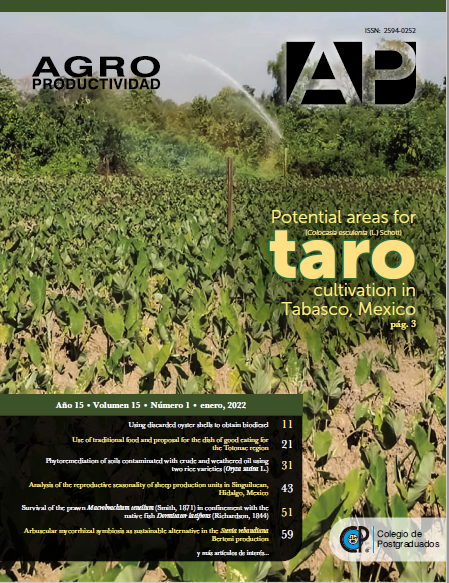Physiological response of three wild castor bean (Ricinus communis L.) ecotypes exposed to different levels of substrate moisture
Main Article Content
Keywords
Intracellular carbon dioxide, leaf water vapor pressure deficit, morphometry, photosynthetic rate, stomatal conductance
Abstract
Objective: To analyze the morphological and physiological responses of three wild castor bean (Ricinus communis L.) ecotypes with four levels of substrate gravimetric moisture.
Design/methodology/approach: Wild castor bean seeds were collected in the Durango State’s arid zone, Mexico. Three possible ecotypes of seeds were selected according to seed size and shape. A completely randomized greenhouse culture was established with the three wild castor bean ecotypes in substrate with four levels of gravimetric moisture (T1?= 24±2%; T2?=20±2%; T3?= 16±2%; T4?= 14±2%). Physiological measurements were performed with a photosynthesis meter LICOR (LI-6400XT). Two-way analysis of variance was performed to obtain significant differences among factors and their interactions.
Results: The most striking results are the following: ecotypes 1 and 2 had higher stem height and larger leaves than ecotype 3. The differences in plant growth due to the effect of substrates with gravimetric moisture of 24% and 20% were not significant (p = 0.05). The highest photosynthetic rate corresponds to ecotype 3 (14.77±6.14 ?mol CO2 m-2s-1); however, the differences were not significant among the ecotypes. The differences were mainly determined by the substrate moisture.
Limitations on study/implications: Knowing the castor bean water requirement as a crop allows optimizing the use of water in regions where this resource is scarce.
Findings/conclusions: The castor bean ecotype 1, whose seeds were of great volume, little eccentricity and very round; they are associated with plants with longer and wider stems, with longer and wider leaves. This genotype could be domesticated considering the substrate moisture 24% and 20%.

